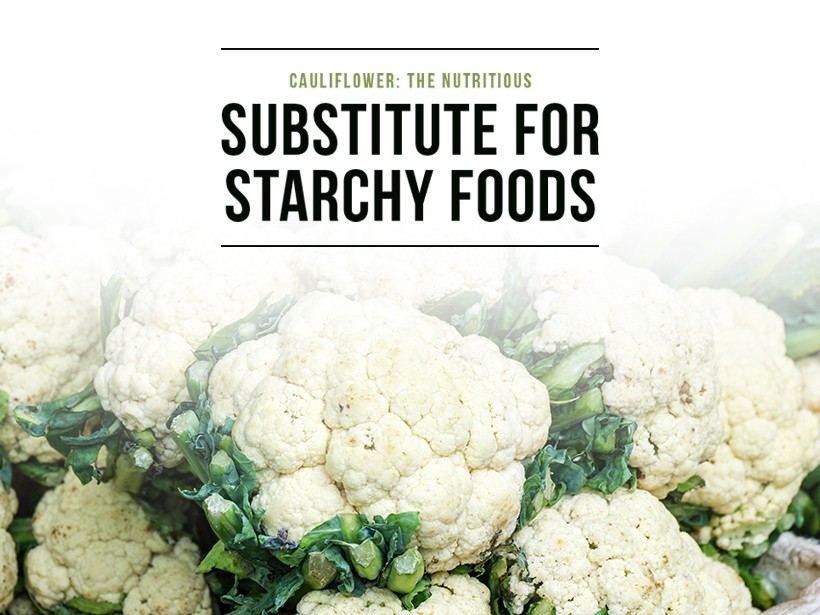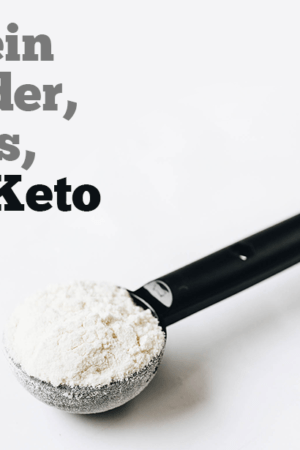When you get down to it, some foods just make healthy eating much easier. As you set out in pursuit of your New Year’s resolution to be healthier (or continue your already established lifestyle of healthy eating), we want to be sure you’re aware of these foods and the benefits they can bring to your diet.
One such unsung rock star in the food world is the oft-ignored cauliflower. I know what you could be thinking: isn’t cauliflower just weird, white broccoli? The answer, of course, is…NO! When it comes to healthy eating, cauliflower is a powerful double-threat: dense nutritional value paired with versatility in preparation make it a versatile, nutritious substitute for high-carb foods.
Cauliflower: a nutritional win
Cauliflower has many health benefits.1 To start, one cup of raw cauliflower contains only 25 calories. Not only is it a low-calorie food; cauliflower packs a nutritionally dense punch. Rich in vitamin C (one serving has over 75 percent of your daily needs), high in fiber, and high in antioxidants, cauliflower offers a substantial amount of nutrition with little caloric cost. To complete the package, almost every vitamin and mineral you need can be found within this underrated white vegetable. If you’re looking for a food that can nearly do it all when it comes to nutrition, look no further than the “weird broccoli” that you’ve probably been ignoring.
Cauliflower: the versatile vegetable substitute
Still not convinced that you need to add cauliflower to your diet? Then get this: cauliflower’s secret power is its versatility as a substitute for high-starch foods. Do you want to get more nutrition out of your calories? Or do you want to go keto to lose weight and be healthier? Either way, cauliflower might become your secret weapon, because it can be substituted into recipes in place of starchier foods like rice or potatoes.2 Incorporating it into your keto plan can help you add a variety of recipes to your repertoire and significantly increase their nutritional value.
For example, you can use cauliflower to create a low-carb avocado toast. If you have a recipe that calls for rice, you can instead use cauliflower rice, which contains all the flavor and texture of regular rice but only a fraction of the carbs. As low-carb chefs have considered the value of cauliflower as a substitute, the more creative they have become. Consider this suggestion for using cauliflower in a Mexican rice recipe. Also, perhaps most importantly, don’t miss this winning recipe for the low-carb diet: cauliflower pizza crust!
Cauliflower: a powerful tool for the keto dieter
I hope that the possibilities of this “weird broccoli” have gotten you excited. Cauliflower can be a powerful addition for those looking to add variety and nutrition to a low-carb diet. You can use it in a seemingly limitless amount of recipes to increase the nutritional value of the food you eat. If you want to try it out, start by searching for “cauliflower” in the search bar above.
NUTRITIONAL DISCLAIMER
The content on this website should not be taken as medical advice and you should ALWAYS consult with your doctor before starting any diet or exercise program. We provide nutritional data for our recipes as a courtesy to our readers. We use Total Keto Diet app software to calculate the nutrition and we remove fiber and sugar alcohols, like erythritol, from the total carbohydrate count to get to the net carb count, as they do not affect your blood glucose levels. You should independently calculate nutritional information on your own and not rely on our data. The website or content herein is not intended to cure, prevent, diagnose or treat any disease. This website shall not be liable for adverse reactions or any other outcome resulting from the use of recipes or recommendations on the Website or actions you take as a result. Any action you take is strictly at your own risk.
- Total Keto Diet Featured at DownloadAstro – App of the Day! - July 30, 2019
- Israel’s Yofix Launches Plant-Based Yogurt Alternative - March 4, 2019
- Glycemic Index Versus Glycemic Load: the Science Behind the Carbs - February 20, 2019




